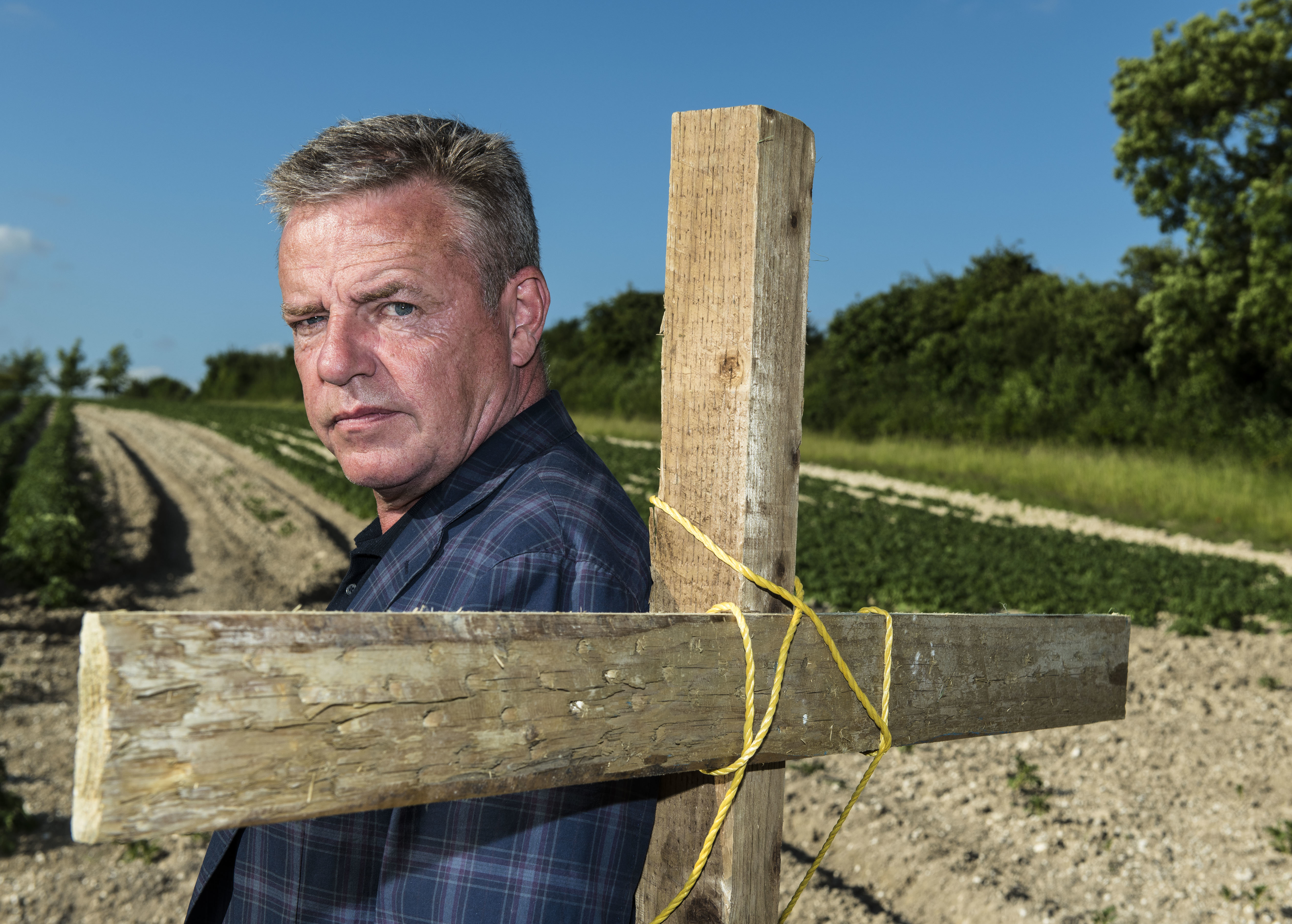WW2 Treasure Hunters has returned to History for a new seven-part series. Co-presented by Madness frontman Suggs and Britain’s foremost amateur detectorist Stephen Taylor, the series brings forgotten stories of the Second World War back to life by unearthing objects from former military sites or battlegrounds across the UK and Western Europe.
For the second series, Suggs and Stephen have found an exciting array of artefacts including a Spitfire shot down in Belgium and the remains of a Fairey Battle bomber aircraft in northern France. There are also more discovered personal items such as Lee Enfield bayonets, dog tags and even condom tins.
After finding these hidden historical artefacts, the pair then attempt to return the relics to the families of the original owners. To chime with the centenary of the end of the First World War, the series also opens with an Armistice special.
History Answers was delighted to speak to Suggs about WW2 Treasure Hunters Series 2 where he discusses his fascination with history, the thrill of discovering new artefacts and flying in a Spitfire.
How did you become involved with WW2 Treasure Hunters?
Bizarre things happen to me in my life. I’ve always had an interest in history but I didn’t really concentrate at school so it came to me later in life. I did a couple of programmes about the history of London, which I’ve always had a fascination with, and then this funny old company came along and asked me if I’d do something called The Salvage Squad. They thought, “We need somebody to guide us through the intricacies of late-Victorian steam engine restorations. I know, Suggs from Madness can do it!” It was something I knew absolutely nothing about but it was a whole world of new information for me.
Some years later, somebody saw one of these programmes and they were talking about doing this new History Channel show called WW2 Treasure Hunters and it’s been a nice mixture. Obviously, I am there to be the “average man” asking questions that the viewer might ask as opposed to Stephen Taylor who is a historian and detectorist. It’s that combination of having someone who knows what they’re talking about and also having somebody onboard who you might not think would get involved in something like this.
It’s been a very nice combination and we’ve done one series before. We enjoyed making it and I was pleased that it got re-commissioned because it’s a very interesting programme.
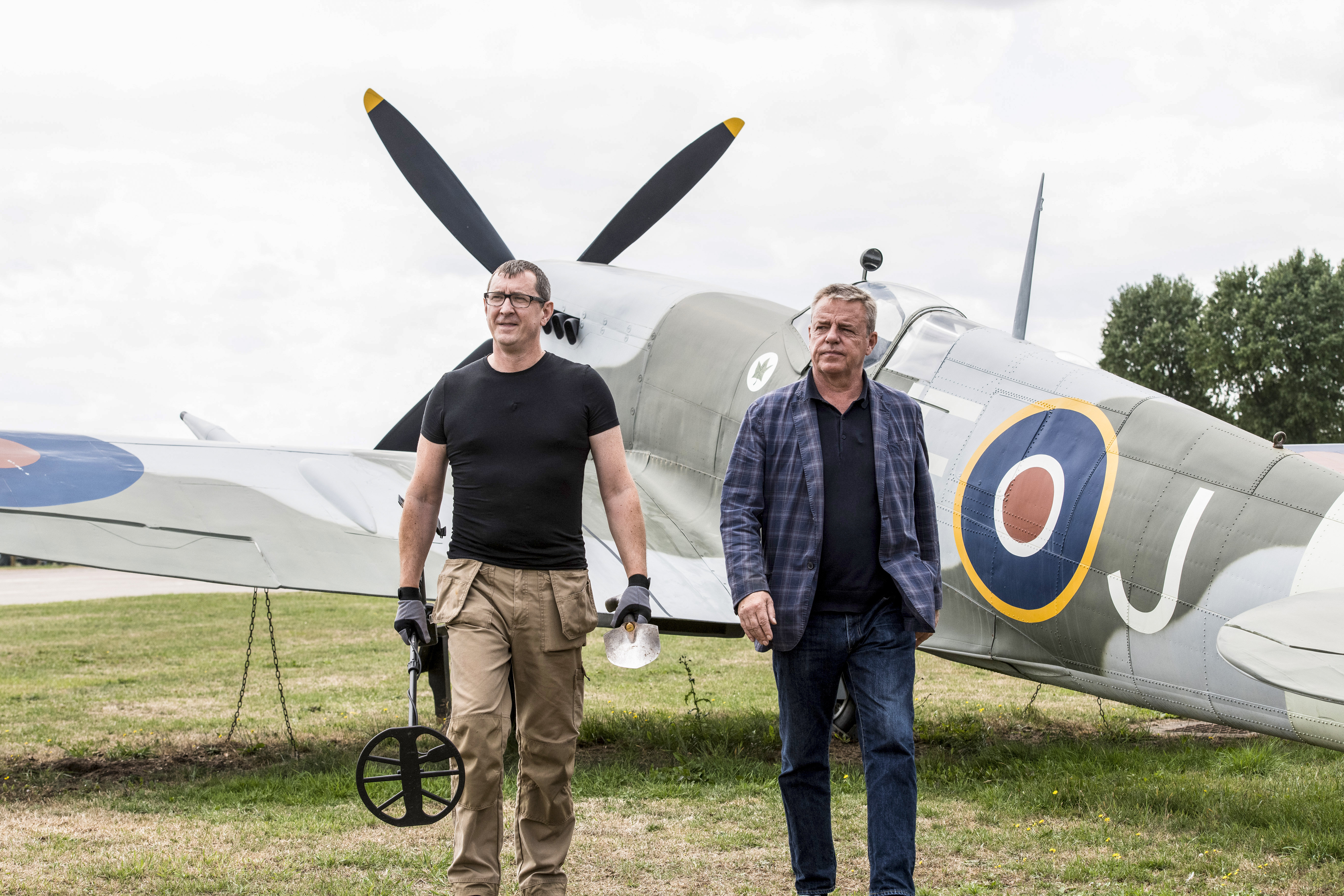
What is the premise of the show?
It’s got a touch of Time Team about it in that it’s got detectorists and archaeologists. We’re finding sites that were forgotten because they weren’t considered that important such as where men were billeted before D-Day. Once the tents and the men had gone, that was it. Therefore, the show is about people like Stephen and his mates finding out where these soldiers were. Then its just potluck with metal detectorists hoping to find stuff.
That’s their side of the show and then my side is to follow up the stories of the things that we find. It may be something as humble as a boot or cigarette tins but all these things relate to the everyday life of soldiers and I think that will paint pictures that you don’t normally get. You usually read about the big figures and the scale of the war but you can also see just one man’s life. You can see a boot and or a cigarette tin and think, “That kid was probably sitting under a tree having his last cigarette and maybe he never came back.”
What artefacts were discovered in the first series?
We discovered a Covenanter tank, which was pretty remarkable. It was a pretty useless tank and that was the reason it was there because they didn’t bother using them anymore. It had a slight design fault in that it had the radiator on the front so it only took one bullet and the thing was f*****d!
The British decided to leave them around England during the period when we thought the Germans were going to invade. It was a deception operation where they were spreading these tanks around as well as dummies. One of them ended up being buried in Dorking and it was pretty remarkable to put your spade in, start digging and then find a flipping tank! It was extremely exciting to pull it out of the earth.
We’d also find things like Sten machine guns, cap badges-anything. We found an RAF spoon that had a number on the back and we managed to trace the spoon back to a Spitfire pilot! These were incredible bits of history that demonstrated that sometimes it’s the smaller things that are more exciting than the bigger ones.
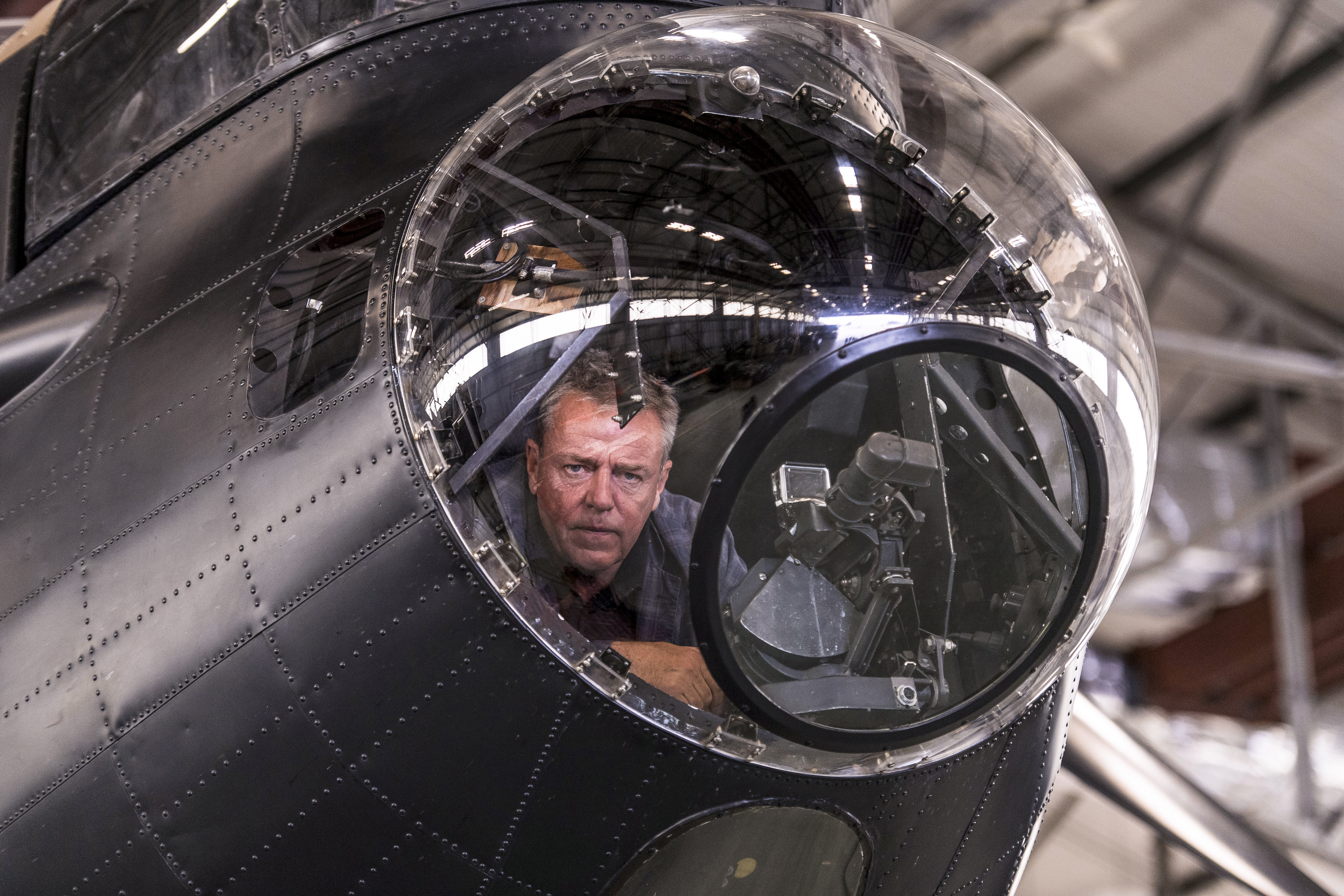
What artefacts were discovered during the filming of the second series?
We’ve found dog tags, Sten guns, bits of a Spitfire and we went to Weedon Bec, which was an old arms depot. There was a hell of a lot of stuff there and it was connected to Montgomery and El Alamein. It was the first time during the war where we were superior to the Germans in arms and ammunition and you forgot that it is supplies that win wars as much as bravery and tactics. Weedon was a great source of armaments to that particular front line.
How does it feel to dig up artefacts from the World Wars?
It’s really extraordinary to think they’ve been in the ground all that time. With planes of course you’re obviously not going to find a whole Spitfire. At the time it was on fire and its wings were crashing in on themselves. As it hit the ground it was stripping itself away and all you’d be left with was the engine and bits of propeller etc. Even so, we’d find things like the speedometer and you just think, “Jesus Christ, that might be the last thing the kid looked at while plummeting out of the air.”
Then of course to see molten metal you remember that the engine would have been on fire. Without trying to sound morbid you’d see a bullet hole and wonder how and when the Spitfire came down. Then you feel the respect for the pilot and wondering what it felt like when the plane came plummeting down. It’s very moving.
Finding things like bits of a Spitfire is a great excitement and it puts the whole story together. You can also trace the pilots, including one in our shows who came from Czechoslovakia. We knew what he’d done and heard stories about him crash-landing somewhere and we found his plane. That puts a full circle on the story.
To me, things like dog tags are actually the most fascinating because you can trace someone back to their families. We found one from a guy who had come from Naples to New York and then was sent back to Europe to fight in the war. These stories are very poignant because the records are all there so we’ve had some amazing finds on that score.
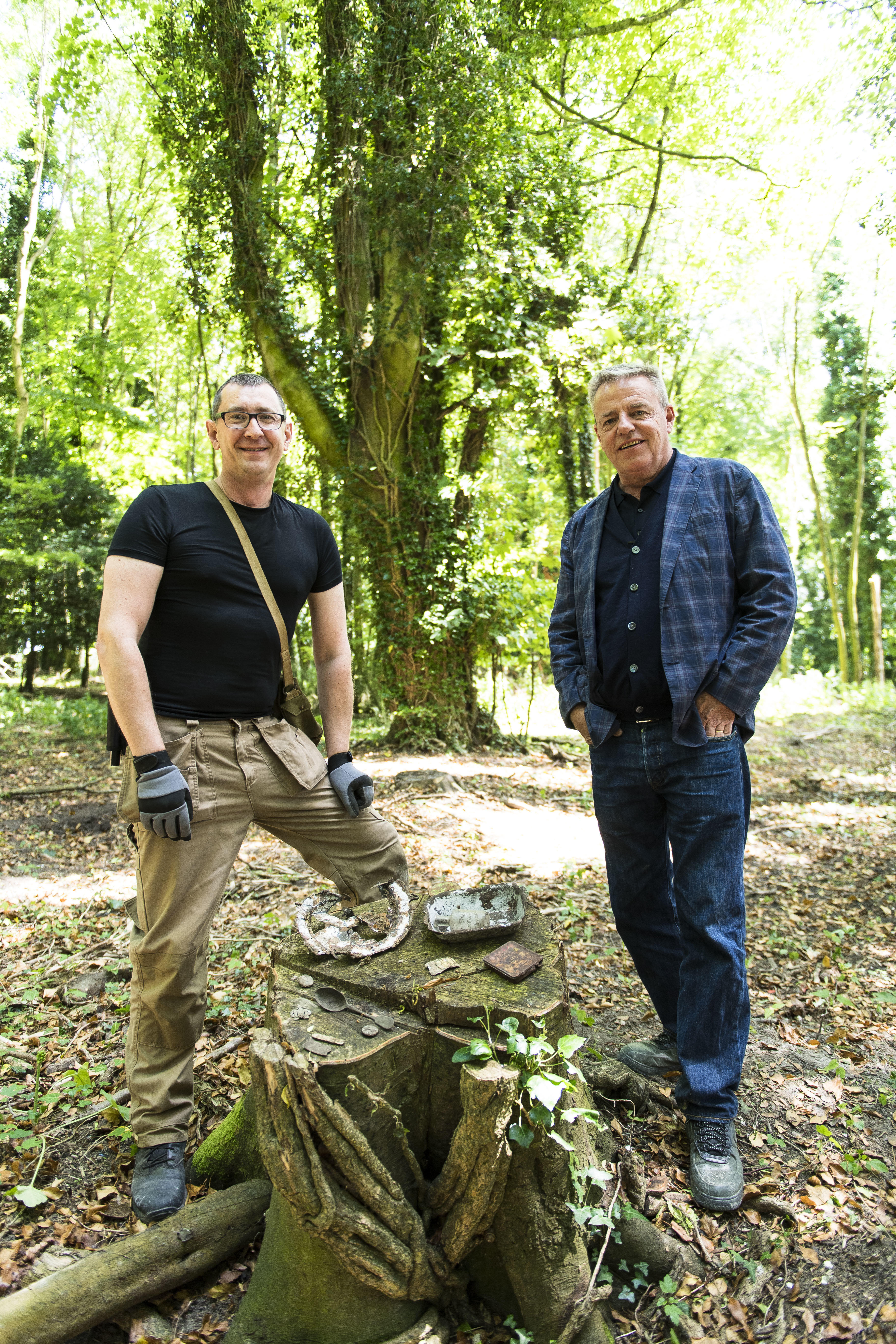
Did you manage to return the artefacts to the original owners’ families?
Yes, we’ve had a lot of that and Stephen mostly takes care of it. We found a Fairey Battle plane and the pilot bailed out of it and won an award called a ‘Caterpillar’. This award was made by one of the companies that made the parachutes. The silk from a caterpillar is of course used to make the parachute and you got one of these badges if you bailed out and landed successfully. We managed to get this back to his daughter who is now 93 and that was very moving. That makes its real when human beings are still involved.
What weapons and vehicles did you get to try out during filming?
We found Sten guns and I got the opportunity to fire them, which was even better. That’s the other great joy for me, I get to fly in Spitfires and drive tanks while Stephen’s down a hole.
I tried a Lee Enfield rifle and it’s German equivalent. It was interesting because the Germans had to move their eyes slightly when they reloaded, which gave the Lee Enfield a slight edge.
I also drove in a WWII truck, which would have been present at El Alamein for example. It was great for me when people said, “Do you want to get in this truck and drive it?” I had no experience whatsoever and the next thing I knew I was careering around this corner with four people to help turn the steering wheel! We were narrowly missing buildings and it was very unwieldy.
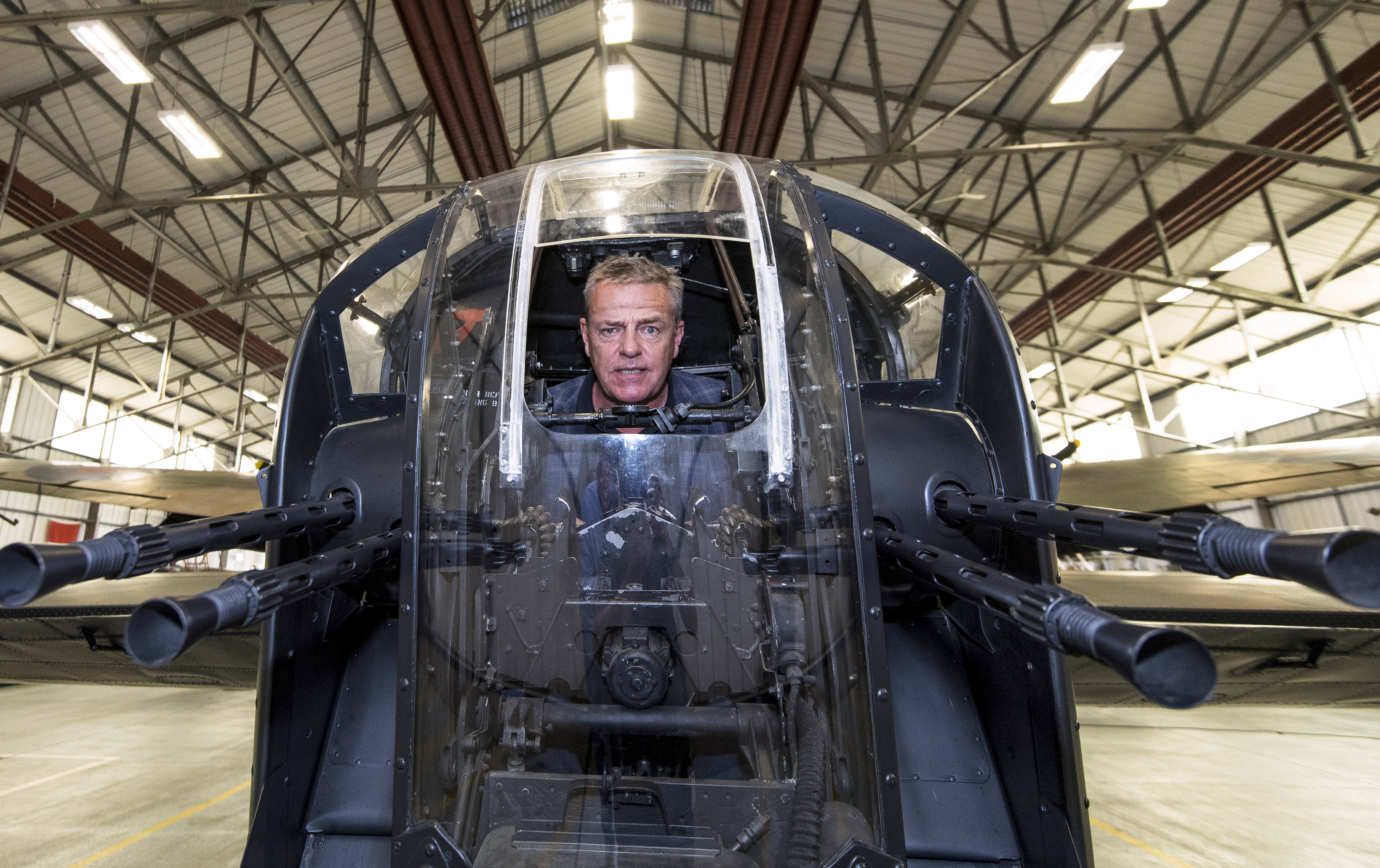
What was it like to fly in a Spitfire?
That was just the best. I’ve never done anything that’s elicited more jealousy from my friends: never mind playing Glastonbury or being a pop star! It really was an extraordinarily visceral experience because you’re literally touching the sides of those things. You can feel the vulnerability even though you’ve got a very powerful engine. The structure of the plane makes you feel like a bird and there is that thing of flying at that height and really seeing the detail of what’s below you.
We went out over the sea imagining what it would feel like to “scramble”. I got as close as I could get to feeling what it would be like although I’d never truly know what it would really be like. To go up through the clouds and to not know what is waiting for you up there was a tremendous feeling.
The pilot also did a victory roll and figure of eight. Its funny really because I’m not great with heights but it was so exhilarating that I didn’t have any fear. It was a real thrill.
What does the Armistice centenary special episode focus on?
We start off at Morn Hill near Winchester where hundreds of thousands of soldiers were camped. It was a 12-mile march down to Southampton and for two weeks during WWI there was this constant stream of men night and day. There was very little record of where it was because it didn’t have any relevance after they’d gone but we managed to find all sorts of extraordinary stuff.
Hundreds of thousands of troops were encamped there. What was interesting was that the British were calling back all these soldiers from the empire including India, Australia etc. A lot of them were turning up in khaki shorts and pith helmets in December in England before they were all sent out to the front.
We then went to Ypres in Belgium and then a little bit of France. Interestingly, when we were there we met some people who were employed by property developers to deal with unexploded ordnance. There are literally thousands of tonnes of it still about. Every time there is some serious building work they send these detectorists in and when we were on a building site they found a few shells. They said, “This isn’t much” even though they were unexploded shells! It’s an everyday occurrence for them because there were two World Wars taking place on a lot of those battlefields. It was fascinating to be standing there watching them pull out bombs in the middle of what would normally be abstract history.
The thing that really struck me was the production of metal that went on during WWI. I know that sounds really stupid but there was a huge amount of metal that was needed to keep that war going with bullets and bombs. It makes you realise that the scale of how many people died during the First World War can never not be anything but shocking or poignant.
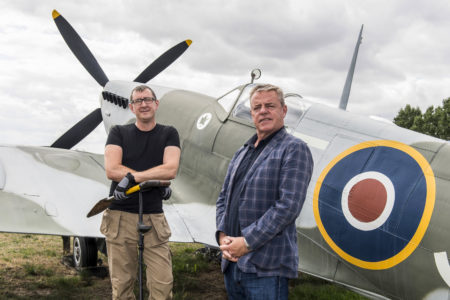
Have you always had an interest in the World Wars?
I come from a generation that grew up only 20 years after the Second World War. I remember drawing Spitfires and people pretending to shoot each other in the playground etc. It’s just been part of my life but I am interested in history and this has been a fascinating exercise for me to learn a lot more about the war than I realised.
Did you have any family connections to the Second World War?
My grandfather was in Burma but he never talked about it because I think he was so freaked out. It was a particularly unpleasant part of the war and when I was in my teens I never had the inclination to ask him about it. Now of course I’d love to know but that time has gone.
What is it about the Second World War that people find so fascinating?
It was obviously a turning point in our history and it’s so prevalent to what we’re going through today in terms of Europe splitting up etc. Life is so complicated now, including war, for the average person to understand whereas WWII was a war everyone could understand. We were fighting the baddies, a lot of brave people died and we survived so that was a very important moment in our history.
What do you hope viewers will learn from watching WW2 Treasure Hunters?
I hope people will realise how many of these brave young men gave their lives for what we take for granted on a lot of occasions. I don’t think everybody does but I think it is possible to remind ourselves that we were in a very precarious position. We don’t seem to remember that a lot of the time and just spend our lives moaning. A lot of brave people got us through that time and now here we are with democracy and the freedoms that a lot of countries around the world don’t have. I hope that maybe people will realise that a little bit more.
WW2 Treasure Hunters is available on demand from History and is broadcast every Monday in a seven-part series.
Episode 1: WW1 Armistice Special
Episode 2: 1941 Hull Blitz and the Boulton Paul Defiant fighter aircraft
Episode 3: Weedon Bec and Montgomery’s Eighth Army
Episode 4: Spitfire Mk IX
Episode 5: RAF Fairey Battle light bomber aircraft
Episode 6: RAF Little Staunton Pathfinders airbase
Episode 7: American soldiers in Devon
Images courtesy of the History Channel.
